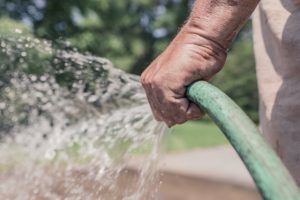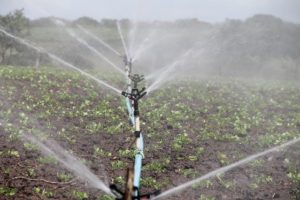The Proper Way to Water
August 31, 2015 Maintaining your garden can be a chore if you are ill-equipped to handle the job. We’re not just talking about bringing your gloves and pruners, but even more importantly the knowledge of how to properly care for the landscape you and your landscape designer have created.
Maintaining your garden can be a chore if you are ill-equipped to handle the job. We’re not just talking about bringing your gloves and pruners, but even more importantly the knowledge of how to properly care for the landscape you and your landscape designer have created.
One of the most common issues with a plant’s ability to survive is the way they are being watered. While it may seem simple enough, you’d be surprised how often a lack of water or an excess of water leads to a plant’s demise. You want to keep your plants all looking great year-round while also avoiding the costly expense of replacing them for something as preventable as drying out or being flooded.
The secret to great watering is to ensure that the root zone gets a sufficient amount of water. This seems simple, right? The problem begins when all the other variables in watering come into play. Some variables that will affect the way you water include:
- The plant type
- A weeping willow can tolerate a lot of water whereas a shrub in the genus spiraea can survive with much less.
- The weather
- If you’re in a drought you’ll need to water more frequently than if you see rain several times a week.
- The time of year
- We’ve had a relatively dry summer after a moist spring. Naturally you’ll want to be watering more now than you did just a few months ago.
- The soil
- If your soil has a lot of clay it will hold more water than just a simple peat mixture. Think about how quickly pots need repeat watering as opposed to something that is planted in the ground.
How do you ensure then that your plants’ root zones are getting the right amount of water? While it may seem counterproductive, you’ll want to water lessfrequently. The reason you will be watering less frequently is because you’ll be watering moreat one time, giving your garden a quality soak that will allow the roots to get a sufficient amount. Some of our favorite tips are:
- Water deeply and thoroughly
- Depending on what you are watering, you’ll need to allow the water time to soak down into the soil 6-12 inches. Again, for a heavier soil this will take much longer than a lighter, airier soil. Investing in a drip irrigation system or soaker hose is a great idea for large areas, whereas you can get away with leaving your hose out at a light trickle for just a few new additions.
- Water in the morning
- You’ve likely heard the morning is the best time to water, and this is because it allows the plant time to dry out if you get some moisture on the leaves. Moist leaves can be more susceptible to disease.
 Water evenly
Water evenly- You’ll want to make certain the entire root structure is receiving enough water, so be sure to hit the whole area evenly.
- Only water as needed
- As we mentioned above some plants and areas can take much longer to dry out. Dig down a little bit into the soil at the base of the plant and see if the ground is dry. If you’re having difficulty, soil moisture sensors can be purchased that will let you know if it’s time to water.
- Don’t forget the mulch
- Mulch helps plants retain moisture better since it reduces runoff and slows evaporation. It also helps insulate for those harsh winters.
With just a few simple adjustments to the way you are watering you’ll see a significant improvement in the success of your landscape. Proper watering is the foundation of a great garden, and we’re happy to share our secrets with you!